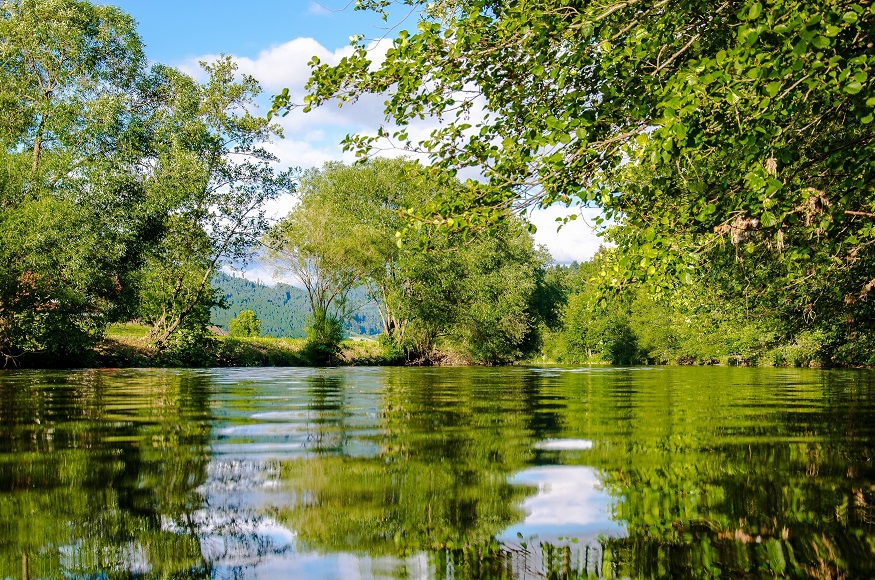According to the Cambridge Dictionary, “rewilding” refers to “the process of protecting an environment and returning it to its natural state, for example by bringing back wild animals that used to live there.” Other definitions dictate the removal of human input, thus creating a self-sustaining ecosystem. There is no one way to rewild a place, as what defines an environment’s “natural state” is debatable, and complex ecologies can be approached through various disciplines.
The strong philosophical underpinnings of rewilding have been mainly developed under an ecofeminist academic perspective that links social justice and communal well-being to the health of our environments. This perspective stresses that rewilding is about more than just restoring environments. It is about restoring environments in relation to us—most notably, within the context of how we define nature and its inherent values.
Over the past few decades, rewilding has become popular among environmentalists and naturalists. In today’s article, we explore some of the nuances underlying this magnum opus of environmental restoration while also analyzing its limitations and potentials.

Case Study: A (Rather Large) Flock of Flamingos
We’ll start with a real-world example. The thousands of flamingos that flood Navi Mumbai’s mud flats at Thane Creek every winter have not always ranked that location as their #1 buffet. They have only been flocking there for about 30 years. Their numbers are rapidly rising; according to a feature by The Smithsonian, the flamingo count in 2007 was only about 10,000, compared to the approximate 130,000 that visited this year. Flamingos have become cultural icons in Mumbai, with murals of the large pink birds being painted across the city alongside environmental conservation messages. But the real reason flamingos are thriving in Navi Mumbai? They love to dine on blue-green algae, the primary ingredient of sewage waste. Plus, they never have to make a reservation, as mud deposition from years of construction have created expansive mud flats on which they can feed.
However, these mud flats are threatened by the growth of mangroves, ecosystems that are universally recognized as a good source of protection from the storm surges and sea level rises we will see in the future. Mangroves also provide habitats for other less-visible species, like fish.
With the tools and philosophy of rewilding, it is difficult to imagine how we might tackle the conflicting interests of urban civilization, flamingos, and mangroves. What should we consider as the “natural environment”? Whose interests should we prioritize? Is it that bad to envision a future where humans will always have a role to play in this particular habitat, on the outskirts of one of the world’s largest metropolitan cities, as protectors of the vulnerable flora and fauna that inhabit it? Answering these questions without bias and from a macro point of view can be difficult, and “right answers” may not exist.

Other Complexities of Rewilding
Ensuring that a restored ecosystem, in whatever form that takes, is self-sustaining without human interaction is a fundamental component of rewilding. Some assume this means people are restricted from stepping onto the land at all, but that is not necessarily true. It simply means that humans are not required to keep the many species of an ecosystem alive and in healthy proportion to one another. People can still recreate on land targeted for rewilding projects—for example, by hiking.
Others worry that wolves, lynx, and other large animals will threaten farms and their livestock when reintroduced to a landscape. Rewilding proponents hold fast that these large animals are keystone species. Still, farmers need to be brought into the conversation about how and where animals should be reintroduced and what protections and reparations they might be granted to account for their potential losses.
Finally, rewilding can be expensive. Who funds it depends on the locality and the amount of work to be done. It is often conducted in wealthier nations or regions, while the less economically endowed areas are ignored and miss out on the projects’ benefits. Rewilding can even displace farmers—particularly in Europe, where we are observing de-agrarianization alongside increased agricultural importation from foreign countries.

A Worthwhile Pursuit
Of course, if it had a voice, the environment would never complain about a successful rewilding project. Rewilding can restore biodiversity and provide spaces for threatened or endangered species to rebuild their habitats.
One benefit of particular appeal to humans and animals alike is that rewilding can plant trees that sequester carbon, therefore fighting climate change. It should be noted that if carbon sequestration is the primary goal of a rewilding project, then proper analysis of areas around the globe should be conducted to identify regions with maximum sequestration potential. As expected, the tropics typically have more potential than temperate forests, but variations also occur on a micro-level.
For rewilding to succeed globally, more research, guidelines, and discussion among community members need to occur. Though a valiant effort for the environment, rewilding can nevertheless wreak havoc on individual species’ wellbeing if not correctly executed—including the wellbeing of humans. We urge anyone considering implementing a rewilding project to recruit the help of experts and community leaders before diving into what we hope will become a rewarding and harmonious investment in nature.

 Food
Food Farmers
Farmers Sustainable Living
Sustainable Living Living Planet
Living Planet News
News